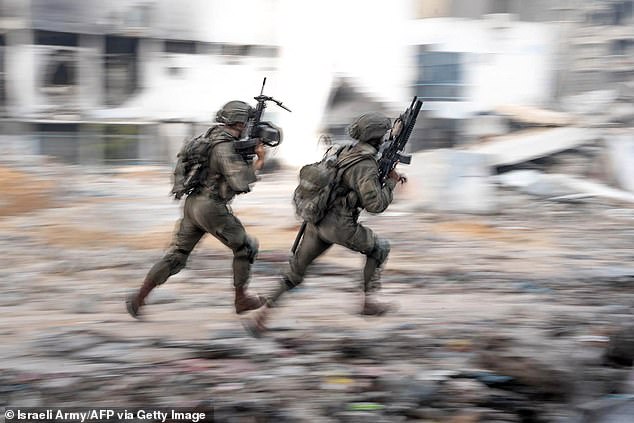Hamas will launch a brutal guerrilla warfare campaign against the IDF, a senior Israeli official has warned, as the terrorist group is claimed to have lost half of its forces.
The heavy losses suffered by the terrorist group have left it too weak to fight sustained battles against the vastly superior Israeli military, reducing its ability to mount a conventional defense of its coastal stronghold.
But Hamas is deeply entrenched among Rafah’s civilians and is expected to endure fierce fighting before turning to insurgency once its conventional forces fall, a sign of the group’s ability to quickly build up its resistance.
Speaking from Israel’s Intelligence headquarters in Herzliya, the senior official told MailOnline it was his duty to dismantle Hamas brigades “despite enormous international pressure” to stop the attack. “We assume there are many hostages in Rafah,” they said.
Meanwhile, Israeli Prime Minister Benjamin Netanyahu is being pressured to accept a ceasefire deal with Hamas that will see the release of all 124 hostages.
But yesterday Hamas rejected the US-backed proposal, saying it would only accept a deal that allowed the IDF to withdraw from Gaza and allowed the group to keep its weapons.
The senior official said Israel has no interest in occupying Gaza after the Rafah operation, but warned of a grueling operation to deal with guerrillas who refuse to surrender, suggesting the conflict could continue to drag on.
Israeli soldiers during operations in the Gaza Strip amid the ongoing conflict between Israel and the Palestinian militant group Hamas.
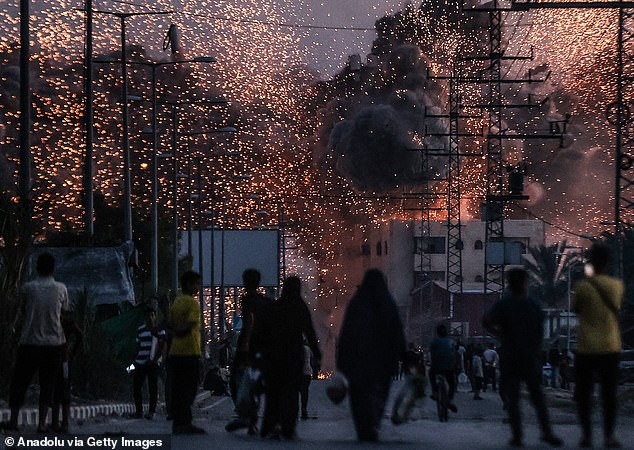
Palestinians on a road as black smoke and flames rise over a building following Israeli attacks in Deir al-Balah, Gaza, on June 6.
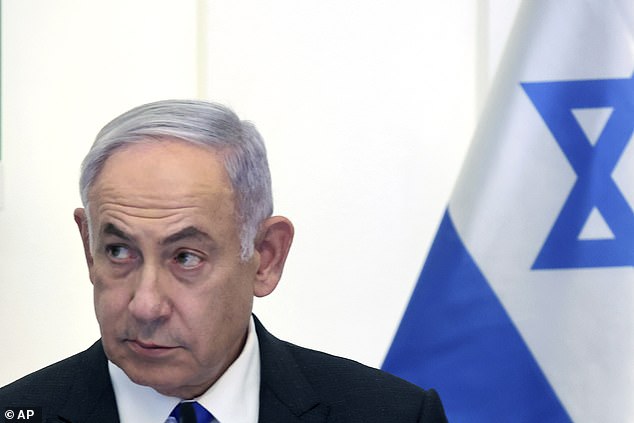
Israeli Prime Minister Benjamin Netanyahu chairs a cabinet meeting at the Bible Lands Museum in Jerusalem on June 5.
Explaining what is required, the official said: ‘They will be raids that will mainly be commando raids, special forces operations.
‘Our operation model will continue in a surgical mode similar to the anti-terrorist operation in Judea and Samaria.
‘We don’t want to manage the lives of people in Gaza. But in terms of security, we will definitely continue to operate in Gaza 24/7 with activities there, but the operational vision or operational concept will be focused on incursions, not occupation.”
Israel withdrew from Gaza in 2005, evicting many Israeli families.
However, Hamas eventually took power after winning the 2007 elections, in which a large number of rockets were sent from the enclave into Israel with the aim of killing civilians.
The IDF has participated in previous operations in the Palestinian territories, including Operation Defensive Shield in the West Bank in 2002.
‘As you may remember, in March 2002 with Operation Defensive Shield, it took us a year and a half to continue dismantling all guerrilla activities,’ the source said.
“No less will be needed in Gaza because it is a larger army created and supported by Iran.”
Israel’s 2002 West Bank operation was launched two days after Palestinian terrorists killed 30 civilians in a suicide bombing at a Netanya hotel while families were celebrating Easter.
The source said he cannot go into operational details about the specific difficulties Gaza faces today.
“It’s very complicated,” he said. “At the end of the day, Israel is an independent state and we will have to dismantle the military power of Hamas so that they cannot commit another October 7.”
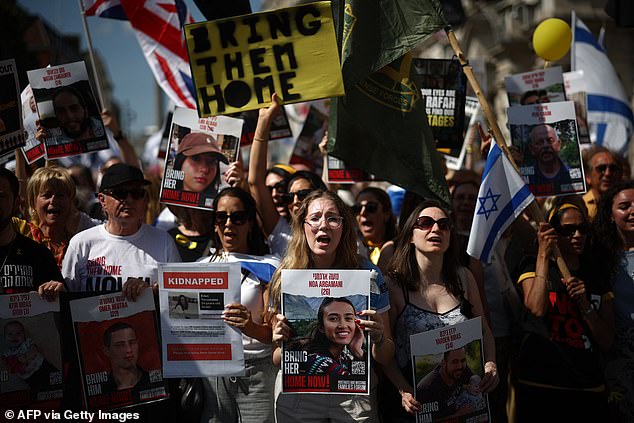
Protesters with banners, including one of hostage Noa Argamani (centre), take part in a “United We Bring Them Home” march in central London.
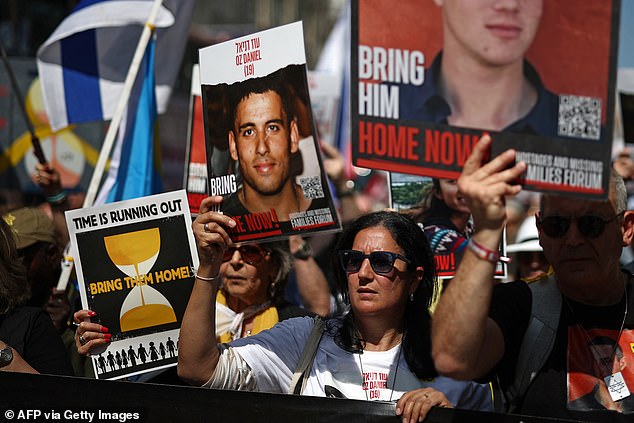
The mother of hostage Oz Daniel (centre) takes part in a protest campaign to return Israeli hostages in central London.
US President Joe Biden claimed last week that Hamas no longer has the capacity to carry out another October 7-style attack on Israel as he pushed for a ceasefire.
But the official said that while 4,000 terrorists may not be able to cross the border and massacre 1,200, “even if four infiltrated Be’eri again, it would be unacceptable.” He said: “Hamas cannot use its military power again or the war will not end.”
US and Israeli officials, cited by Reuters, have estimated that Hamas has seen about half of its forces wiped out since Israel launched its offensive against Gaza.
According to three senior US officials familiar with developments on the battlefield, Hamas has been reduced to between 9,000 and 12,000 fighters, down from US estimates of between 20,000 and 25,000 before the conflict. Israel says it has lost almost 300 soldiers in the Gaza campaign.
Hamas does not disclose deaths among its fighters, and some officials have described Israel’s figures for the number of Hamas fighters killed as exaggerated.
Crucially, between 7,000 and 8,000 fighters are believed to remain entrenched in Rafah, where the Israeli army is currently focusing its efforts, making the southern city the last major bastion of Hamas resistance.
But despite the group’s weakened status, it still retains control over large sections of Gaza and its leadership remains largely unscathed.
Hamas’s 500-kilometer network of tunnels under Gaza, which stretches across the Palestinian territory like an underground city, has been crucial in its defense.
Although some of these tunnels have been attacked by the IDF with explosives and even flooded with seawater, the ‘Gaza Metro’ is believed to still house Hamas’ leadership, command centers and weapons arsenal.
The tunnels will also help Hamas with its guerrilla tactics. Instead of engaging IDF soldiers in open warfare, they are opting for ambushes and using improvised explosive devices (IEDs) to attack Israeli targets behind enemy lines.
The underground network allows Hamas to move more freely, and its fighters can appear unpredictably and carry out attacks against the IDF.
The source also tells MailOnline that efforts to find who will control Gaza began on October 8, and Netanyahu began thinking and planning “before we started maneuvering in Gaza.”
“I wanted to see who would run Gaza after the war,” he said.
The source said that behind closed doors, even some moderate Arab countries want to see them negotiate with Hamas.
But it is still unclear who will govern Gaza after the war.
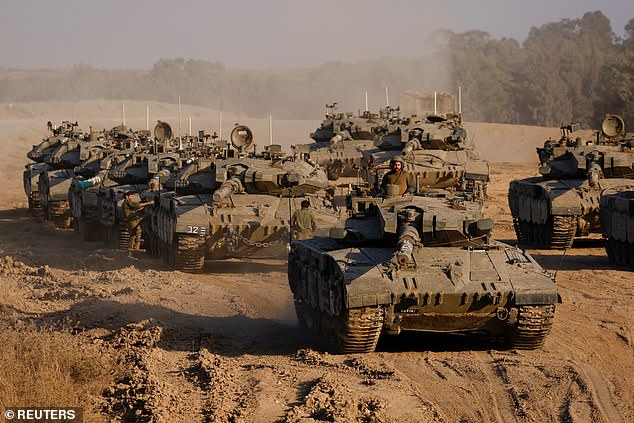
An Israeli soldier stands on a tank, amid the ongoing conflict between Israel and Hamas, near the Israel-Gaza border in Israel.
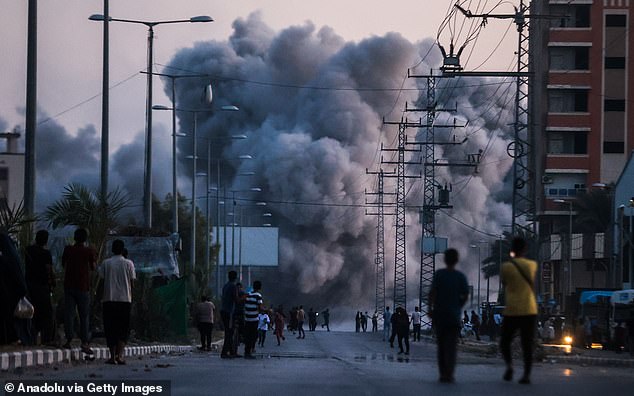
Palestinians on a road as black smoke rises over a building following Israeli attacks in Deir al-Balah, Gaza, on June 6.
Israel does not consider calls for the Palestinian Authority, which administers the West Bank, to take control to be an acceptable option.
The source said: “I can say in general that Israel does not see the current Palestinian Authority (PA) as someone who can take control of Gaza.”
They cited PA schemes that see terrorists’ families receive financial support after committing atrocities and children radicalized through textbooks as evidence that the body “supports terrorism” and “promotes terrorism through education system”.
For now, the IDF’s role is to “ensure that the southern border of the Gaza Strip is secured, otherwise the military might of Hamas will take control again,” they said.

